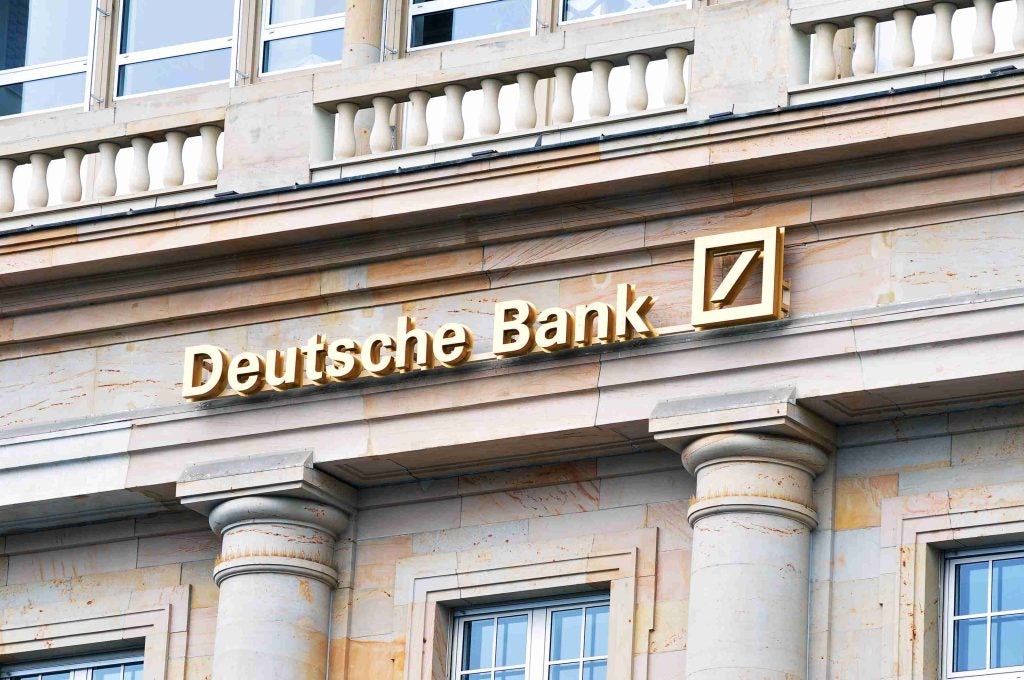
Future of Private Banking: Embracing AI, Data Analytics, and Personalized Wealth Management
What trends are going to impact the private banking sector the most in 2023? There are so many emerging themes in the industry; ESG, crypto, blockchain, cybersecurity, philanthropy. The future of private banking in 2023 will be incredibly interesting to witness. What will steal the limelight? Patrick Brusnahan discusses this with the industry
Alessandro Hatami, managing director, Pacemakers
Private banking and wealth management firms are braced for one of the biggest disruptions the sector has ever faced. This disruption is not due to a global recession, global warming, technological transformation or the arrival of new entrants: instead, it will be driven by The Great Wealth Transfer. Experts forecast that by the end of 2045, $84 trillion in wealth will transition from one generation to the next. Just as a comparison, the USA’s entire GDP last year was $23 trillion.
This generational change will have a profound impact on the wealth management industry. Surveys indicate that the new wealth customers want different things from their wealth manager compared to previous generations. Three major themes emerge: Firstly, the next generation believes that traditional investments will not produce the required returns. Secondly, they want to use their wealth to achieve a purpose. Thirdly, new wealth customers have higher expectations of their private bank than their parents.
With these themes in mind, we can expect the following trends to take shape in 2023:
- The rise of alternative asset classes
According to a recent study by the Bank of America Private Bank, younger clients believe that traditional stocks and bonds offer less opportunity for growth than alternative assets such as private equity (including Angel and VC), private debt, specialist funds, collectibles and … crypto assets.
With this in mind, wealth managers will need to start offering their customers a wider range of investment opportunities to remain viable. In 2023 we will see a growth in private banks offering their clients access to new asset classes. The volatility of these asset classes and the fact that they are much less regulated than traditional asset classes will make it practically impossible for banks to provide advice in the way they do for publicly traded assets.
How well do you really know your competitors?
Access the most comprehensive Company Profiles on the market, powered by GlobalData. Save hours of research. Gain competitive edge.

Thank you!
Your download email will arrive shortly
Not ready to buy yet? Download a free sample
We are confident about the unique quality of our Company Profiles. However, we want you to make the most beneficial decision for your business, so we offer a free sample that you can download by submitting the below form
By GlobalDataOne likely scenario is that private banks will start operating as channels connecting their clients to investment opportunities without providing their own investment advice. Accepting cryptocurrency trades will be the most striking manifestation of this shift. In 2023 the reaction of the banks will be best summarised by this comment from JPMorgan CEO Jamie Dimon: “I’m not a bitcoin supporter. I don’t care about bitcoin. I have no interest in it. “On the other hand, clients are interested, and I don’t tell clients what to do.”
- The creation of the digital private bank
A wealth manager’s most valuable asset is their relationship with the client. With the Great Wealth Transfer, new clients will not be satisfied by the traditional periodic face-to-face meetings and hefty printed reports. Instead, customers will increasingly expect a proposition that is more reliant on digital technology than most private banks are willing to provide, including access to real-time information and transactional capability. By slowing down digitalisation, private banks risk accelerating the departure of their new, younger clientele.
Private banks often fear that digitalisation will lead to the disintermediation of the relationship manager by an app or worse, a robo advisor. These fears are unfounded. Going forward, the ideal private bank is a bank that customers carry with them all the time, where they can see the real time value of their portfolio 24/7, where insights are requested and delivered instantly and where interaction with their (human) wealth advisor is supported digitally and augmented by interactive interfaces.
But change is afoot, and some private banks are looking at building their own digital version. Credit Suisse’s Wealth Management app is a good example.
- The emergence of wealth as a service
To meet the increased expectations of this new class of client, private banks will need to provide an increasingly wide set of products and services to retain their customers. What’s more, the simplicity of digital banking, especially for young, wealthy customers, makes it very easy for them to change banks if their parents’ bank does not offer what they want.
New providers are offering access to new asset classes, help with ESG and philanthropic projects, tailored professional advice and even lifestyle services. Private banks have a choice: they can accept that their clients will engage with these providers without getting involved, or they can decide that they should play a part.
What if the banks became the trusted gateway through which their clients gain access to a much wider range of services than the previous generation? The private bank could become a platform where the client not only enjoys services offered by the bank, they also gain seamless access to services and products provided by select third parties. Extending private banking services to other wealth services has always been part of the wealth manager’s remit. Today’s technology can make this a reality with much less effort than ever before. Open banking APIs, Web3.0 investment platforms, angel networks, crypto exchanges, ICO/ITO platforms can transform the private bank into the single point of contact that wealth clients need in order to get the most from their wealth.
In 2023 we will see private banks realise that, in the long term, becoming a safe platform from which clients can access the outside world is a more sustainable and profitable strategy than the gated garden they have been striving for.
Stéphane Monier, Chief Investment Officer, Lombard Odier
2023 may divide into two distinct phases. The effects of tighter monetary policy, high inflation and slowing growth will carry into 2023, demanding prudent portfolio positioning. However, once real interest rates peak, the economic cycle will pivot, creating opportunities to raise allocations to risk assets.
That will only happen once the Federal Reserve halts its interest rate hikes. The central bank is entering a new phase in its monetary cycle by slowing the pace of tightening as inflation declines slowly from four-decade highs. A higher peak in interest rates will accompany a probable recession late in 2022 and into 2023. The resilience of the American job market will be key to the shifting pace of monetary policy.
In Europe, consumer prices remain largely driven by energy. The continent’s decoupling from Russian sources is having deep economic and geopolitical consequences. Much now depends on the severity of the northern hemisphere’s winter, but gas inventories have been replenished.
China is a potential source of growth in 2023. Its exports remain an essential component of global supply chains and we see the authorities gradually shifting their Covid strategy to re-open the economy. The recovery of the Chinese real estate sector will be another precondition for economic expansion. However, international trade patterns continue to evolve in a more fragmented world, as corporations make their supply chains more resilient through ‘friend-shoring’.
The main risks for global growth remain overly restrictive monetary policies, which would worsen the affordability of housing in developed economies. The war in Ukraine retains the potential to inflict further damage on energy markets and on Europe in particular. Any further delay in re-opening the Chinese economy would weigh on global growth, and we cannot rule out further geopolitical tensions over Taiwan.
We maintain a cautious stance as we enter the first phase of 2023. We favour quality across asset classes. In equities, we like companies with low earnings volatility and better ability to maintain margins. In fixed income, we prefer investment grade over high yield debt, and in currencies, we prefer havens from risk, such as the US dollar and Swiss franc. We are overweight cash, which enables us to stay nimble and seize investment opportunities as conditions improve.
A peak in real interest rates and a trough in economic activity are two key signposts for a different set of investment opportunities. We look at these two distinct phases as demanding distinct responses for portfolios. In this publication, we set out these two approaches for the year ahead.
- A pivot year: look for the inflection point
Monetary policy tightening in the western world, amid a global downturn in economic activity, translates into an unfavourable setup for risk assets. Recession and further cuts to corporate earnings expectations are the main downside risks for both equities and bonds. Peak real rates should provide a turning point in markets. To get there, the Fed will need to pause its interest rate hiking cycle as inflation slows and unemployment rises. As this inflection point approaches, we will gradually increase risk levels in portfolios by adding duration in government bonds and to gold, as well as some equities and credit.
Phase One, pre-pivot: until real rates peak, we remain moderately cautious
- Underweight risk assets for now
Macroeconomic conditions warrant a cautious exposure to risk assets, focusing instead on assets that can better withstand the impact of weaker growth or higher rates. Specifically, this means holding quality stocks, government bonds, and investment grade credit. It also implies overweight cash positions to be able to invest as soon as we see opportunities.
- Prefer quality and diversification across asset classes
In the months ahead, we expect new equity market lows as high borrowing costs limit firms’ multiple expansion, and earnings estimates keep adjusting to recessions. In this context, we look for quality companies with low earnings volatility and better ability to defend their margins. Such stocks tend to outperform in recessions or when profits decline. In terms of quality sectors, we prefer healthcare as it enjoys high margins, some insulation from inflation, due to high pricing power, and attractive shareholder returns. Valuations also remain historically undemanding compared with other defensive growth sectors.
- Asymmetric return profiles
Options strategies, such as put spreads on equity indices, can shield portfolios from drawdowns. We have implemented hedges to portfolios throughout 2022, and we will continue to manage them tactically in line with market conditions.
- Seek diversification through alternatives
As market conditions will remain relatively challenging, we continue to favour resilient hedge fund strategies such as global macro, discretionary and quantitative. These should provide diversification, as they tend to benefit from performance dispersion across asset classes and regions. Their typically convex profiles, designed to perform in more extreme periods, should profit from the volatile environment with limited correlation to underlying markets. Some relative value strategies should also provide attractive returns once rates stabilise.
- USD strength to continue
The US dollar’s strength should be maintained through the ‘pre-pivot’ phase, supported by rate differentials, liquidity tightening and America’s terms of trade. Other currencies supported by this environment include the Swiss franc and potentially, the Japanese yen. The euro and sterling should lag, since they are suffering more structural problems related to the energy shock. The Chinese yuan should also underperform as the country’s robust balance of payments begins to weaken. Post pivot, the dollar should weaken.
Phase two, once real rates have peaked; we add risk to portfolios, adopting a moderately optimistic stance
- Gold’s appeal to increase
For much of 2022, gold prices were caught between support from geopolitical and recession risks, and the downward pressures of real rates and a strong dollar. With lower rates, a weaker US dollar, and a reopening China, gold prices should rise. In October we sold put options on gold, as a potential means of bringing our position to neutral. Selling out-of-the-money put options allows us to potentially monetise the gold market’s current high volatility, while offering clients greater exposure should prices fall.
- High yield credit will become increasingly attractive
As investor sentiment improves, appetite for risk assets will increase. Once high yield credit spreads more fully price a recession, and rates have stabilised, the carry in this segment will be more attractive than investment grade, and sovereign bonds.
- Equities to present a buying opportunity
As inflation and the threat of higher rates begin to fade, stock valuations and multiples will benefit. Easing financial conditions will lead to improving investor sentiment and in turn, expand price-to-earnings ratios. By mid-2023, earnings and sales expectations will be revised lower, and markets will start to look ahead to 2024 and a recovery from the cyclical slowdown. That will present opportunities to add exposure to cyclical and growth names.
- Emerging market equities and local currency bonds
After a Fed pivot, we expect emerging assets to rebound. However, a shift in sentiment and growth dynamics is needed. If these catalysts materialise, we see emerging equities outperforming developed markets, and emerging local currency debt looking increasingly attractive. While we are already gradually more constructive on emerging local rates, given well-advanced monetary cycles, we expect emerging currencies to recover from depressed levels only when financial conditions improve. There will be room for appreciation for emerging assets after the pivot, with more appetite from international investors and improved confidence in the emerging market landscape.
Philipp Buschmann, CEO and co-founder, AAZZUR

AI is now commonly used to make decisions on loans, insurance packages, and fraud detection. This has increased financial inclusion while also improving the efficiency of the delivery of financial services to customers. AI algorithms are already a standard expectation for new fintech applications.
However, the public is beginning to raise concerns about the ethical implications of AI in such mission-critical decision-making. For example, there was a public outcry a few months ago about the Apple card algorithm which gave men higher credit card limits than women.
In 2023, AI algorithms in financial software development will play a larger role in determining who and how much access to various financial services is granted. However, fintech firms must be able to balance the scale that these algorithms provide with impeccable ethics in their implementation by developing robust systems that protect end users.
Financial Inclusion
According to the World Bank, over the last ten years, 1.2 billion unbanked people have gained access to financial services, a feat made possible by the introduction of innovations such as artificial intelligence, which has enabled fintech companies to deliver financial services at scale.
However, the road to global financial inclusion through financial software development remains long, with 1.7 billion more people who remain unbanked, many living in developing and underdeveloped countries.
As a result, we have seen an increase in VC investments in fintech pouring into the African and APAC regions. Experts predict that financial services revenues in Africa will grow by 10% per year until 2025, in what has been described as a “coming of age.”
Similarly, despite the global economic downturn, APAC fintech investment rose to $41.8 billion in 2022 H1, more than doubling the $19.2 billion recorded in 2021 H1.
In terms of fintech investments, 2023 will be a watershed moment in the advancement of global financial inclusion.
The industry is not yet fully developed, and there are several areas that need to be explored. Fintechs should work to boost the robustness of their financial services in order to withstand the shocks and disruption that 2022 has brought. Nonetheless, the possibilities and profit are endless.







